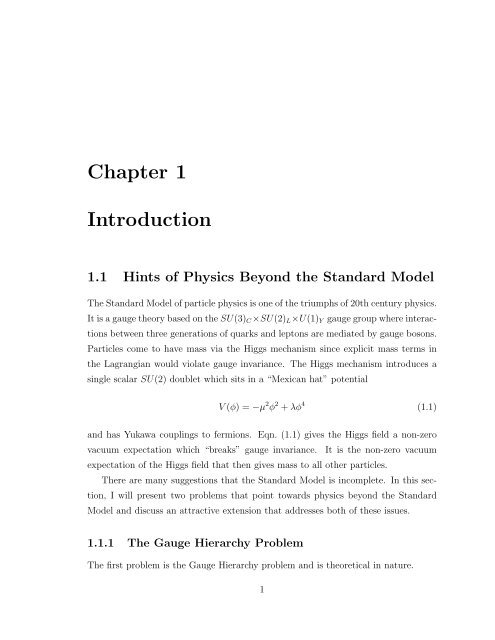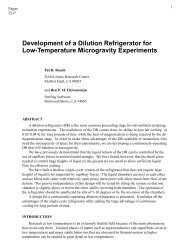cdms-ii - CDMS Experiment - University of California, Berkeley
cdms-ii - CDMS Experiment - University of California, Berkeley
cdms-ii - CDMS Experiment - University of California, Berkeley
You also want an ePaper? Increase the reach of your titles
YUMPU automatically turns print PDFs into web optimized ePapers that Google loves.
Chapter 1<br />
Introduction<br />
1.1 Hints <strong>of</strong> Physics Beyond the Standard Model<br />
The Standard Model <strong>of</strong> particle physics is one <strong>of</strong> the triumphs <strong>of</strong> 20th century physics.<br />
It is a gauge theory based on the SU(3) C ×SU(2) L ×U(1) Y gauge group where interactions<br />
between three generations <strong>of</strong> quarks and leptons are mediated by gauge bosons.<br />
Particles come to have mass via the Higgs mechanism since explicit mass terms in<br />
the Lagrangian would violate gauge invariance. The Higgs mechanism introduces a<br />
single scalar SU(2) doublet which sits in a “Mexican hat” potential<br />
V (φ) = −µ 2 φ 2 + λφ 4 (1.1)<br />
and has Yukawa couplings to fermions. Eqn. (1.1) gives the Higgs field a non-zero<br />
vacuum expectation which “breaks” gauge invariance. It is the non-zero vacuum<br />
expectation <strong>of</strong> the Higgs field that then gives mass to all other particles.<br />
There are many suggestions that the Standard Model is incomplete. In this section,<br />
I will present two problems that point towards physics beyond the Standard<br />
Model and discuss an attractive extension that addresses both <strong>of</strong> these issues.<br />
1.1.1 The Gauge Hierarchy Problem<br />
The first problem is the Gauge Hierarchy problem and is theoretical in nature.<br />
1




